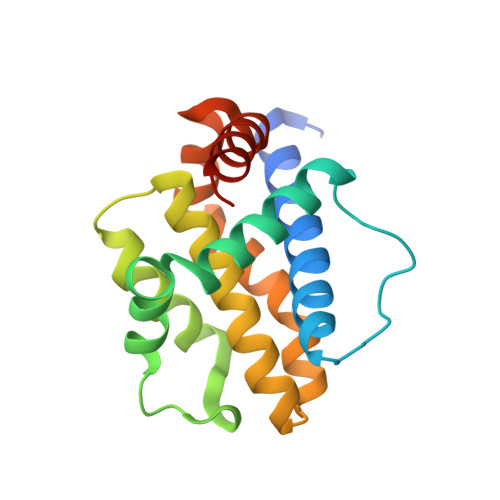Diversity in the intrinsic apoptosis pathway of nematodes.
Young, N.D., Harris, T.J., Evangelista, M., Tran, S., Wouters, M.A., Soares da Costa, T.P., Kershaw, N.J., Gasser, R.B., Smith, B.J., Lee, E.F., Fairlie, W.D.(2020) Commun Biol 3: 478-478
- PubMed: 32859965
- DOI: https://doi.org/10.1038/s42003-020-01208-5
- Primary Citation of Related Structures:
6V4M - PubMed Abstract:
Early studies of the free-living nematode C. elegans informed us how BCL-2-regulated apoptosis in humans is regulated. However, subsequent studies showed C. elegans apoptosis has several unique features compared with human apoptosis. To date, there has been no detailed analysis of apoptosis regulators in nematodes other than C. elegans. Here, we discovered BCL-2 orthologues in 89 free-living and parasitic nematode taxa representing four evolutionary clades (I, III, IV and V). Unlike in C. elegans, 15 species possess multiple (two to five) BCL-2-like proteins, and some do not have any recognisable BCL-2 sequences. Functional studies provided no evidence that BAX/BAK proteins have evolved in nematodes, and structural studies of a BCL-2 protein from the basal clade I revealed it lacks a functionally important feature of the C. elegans orthologue. Clade I CED-4/APAF-1 proteins also possess WD40-repeat sequences associated with apoptosome assembly, not present in C. elegans, or other nematode taxa studied.
Organizational Affiliation:
Faculty of Veterinary and Agricultural Sciences, The University of Melbourne, Parkville, VIC, Australia.















